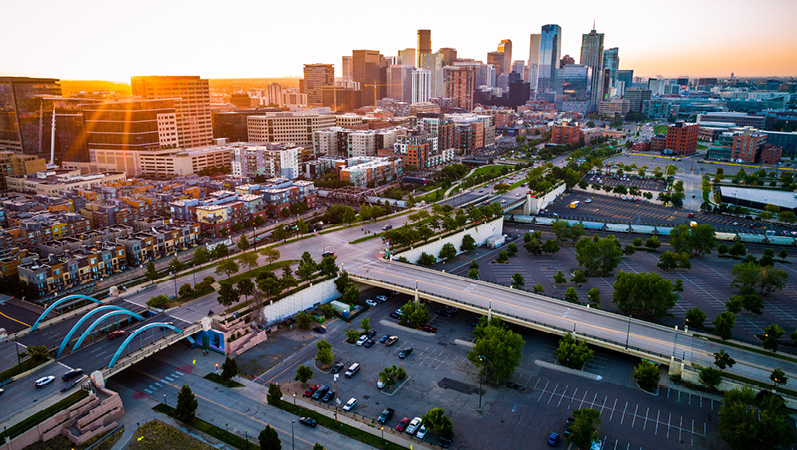Denver has a housing shortage, and construction hasn’t been able to keep up with demand. That being said, technology has is providing a bright light. As a result, it can be hard to find an affordable place to live here. Cities worldwide face similar challenges, not to mention the related problems of homelessness and overcrowding.
Three problems that contribute to insufficient housing and high home prices are labor shortages, and material and labor costs. But innovative technology could alleviate all of these problems, especially if city planning officials are open to the opportunities.
Construction Robots
Engineers are now able to program robots to automatically perform construction tasks including digging, drilling, welding, painting, build bridges, and perform 3-D printing. Robots are able to work independently and supervisors can monitor them remotely. Construction robots are capable of building housing faster and more safely than humans. Not only that, infrastructure may be improved faster using robots.
A 3-D printing company based in Amsterdam called MX3D used four unmanned robots to construct a 3-D printed steel footbridge 12.5 meters long and 6.3 meters wide. The bridge was constructed offsite and will soon be installed in its final location. See their video below.
Modular Building
Perhaps one day we’ll see construction robots building skyscrapers. But for now, one of the most impressive skyscraper construction feats we’ve seen is based on steel modules. These can be built offsite in a factory, then transported to their destination where they are rapidly slotted together, bolted, and welded at a pace of three stories per day.
In 2014 and 2015, entrepreneur Zhang Yue showed how this process works when he spearheaded the construction of a 57-story building in southern China. The modules made it possible to assemble the tower, called Mini Sky City, in 19 days. It was designed to house 800 apartments and supply office space for 4,000 people. It was also designed to withstand a 9.0 magnitude earthquake, be energy efficient, and provide clean indoor air—a key feature given the pollution outside.
Drone Inspections
Mini Sky City required workers to don helmets and trust their lives to the integrity of cables, platforms, and ladders. People had to go up into the air to make the construction happen and make sure the work was being correctly.
Today, drones equipped with high-resolution cameras are increasingly making it possible to inspect buildings under construction without putting inspectors’ safety at risk. Instead of sending a person up to the 20th floor of a building in progress, a drone can fly up and transmit high-resolution images of everything inspectors need to see. Drones can also increase job-site safety for workers, oversee subcontractors, and keep track of materials to reduce mistakes, fraud, and theft.
Drones also play a role before construction even begins. Developers can use drones to survey land faster and with less human error. All of these benefits help keep down construction costs and make the process safer and faster. That’s why they’re buzzing around sites all over Denver.
To see drone images of construction in Denver, visit Matt Staver’s Denver Drone Photography website.
3-D Printed Housing
Maybe you know someone who 3-D printed a rudimentary action figure for fun. But that toy hardly demonstrates what 3-D printers are capable of.
They can create entire houses from the ground up, and fast. Not only that, some of the construction materials developed for 3-D printing can make for more environmentally friendly buildings—ones that don’t require air conditioning, for example, because they use passive cooling. Some of the homes are designed to exist off the grid, meaning they can be placed in remote areas and rely on alternative power sources like solar. That’s what ICON hopes to do with its 3-D printed homes.
To 3-D print a home, robots are programmed to pump out layer atop layer of a concrete-like mixture that resembles icing a cake. 3-D printed homes can be created on site and can be constructed in curved shapes that are challenging to accomplish with timber and drywall. Another option is to print modules off site, then assemble them on site.
Either way, the process can save time, and reduce labor costs and environmental impacts. In part, it can accomplish the latter by employing materials such as scrap concrete that would otherwise be considered waste.
What types of structures have been 3-D printed so far? Besides ICON’s homes, there’s a multistory apartment building in China and a high-end residence in Milan. An upcoming project with lots of buzz is a futuristic-looking five-home development in the Netherlands.
At least for now, 3-D printed homes still require plumbing, electrical, roofing, furnishings, and finishes to be installed the old-fashioned way, but that may not always be the case.
Prefabricated Homes
Decades ago, you could order a house from a Sears catalog and build it yourself (or hire a carpenter). Many of these homes, now more than 80 years old, are still standing, especially in Illinois.
Today, you can do something even easier and super high tech. Haus.me just started selling its “autonomous self-sustainable intelligent house” constructed from 3-D polymer. It arrives fully constructed, furnished, and decorated. The home runs on solar power and includes a 550 gallon clean water tank, along with many other amenities, including remote management of all its systems, easy maintenance and low operating costs.
At the company’s Nevada facility, homes can be manufactured in seven weeks and be transported to their destination in another two to three weeks. The company says it will help buyers with permitting and financing, too. These homes come in three sizes, starting at 400 square feet, so they can be used as accessory dwelling units, rental units, vacation homes, or primary residences. Homes can also be connected to the grid—or not!
An alternative to these pre-fab homes, you can also just buy yourself a tiny home on Amazon.
Sustainable and Recycled Materials
Cost-effective and sustainable materials are leading innovation in a eco-friendly direction. A few examples of these advances include the utilization of mass timber techniques, bamboo, recycled plastics, and recycled building materials.
Mass timber techniques such as cross-laminated-timber (CLT) and glue-laminated timber (glulam) are increasingly being used more and more in place of concrete and steel. Denver’s first CLT building, Platte Fifteen, is a 5-story, 151,736-square-foot mixed-use project with retail and restaurant space and will be opening in the coming months. It was designed by Oz Architecture, one of the first firms to implement CLT in a Colorado project.
In India, plastic bags found in landfills are being turned into colorful plastic bricks that “can withstand up to six tonnes of pressure and if exposed to the monsoon season are likely to be able to hold up better compared to the current clay brick homes that are often washed away,” (The Big Issue).
Shipping containers are a fabulous source of recyclable building material. According to Elemental Green, “there are millions of containers around the world, and they’re typically only used for shipping for about 20 years; at that point they’re often retired and disposed of, even though they’re still in great condition…Shipping containers made of aluminum or steel are inexpensive, and stronger than average, building blocks — like giant, super-strength Legos. They can be modified and re-arranged to accommodate endless design possibilities.”
Bamboo is also an increasingly popular building material for items like flooring and cabinetry. It is easy to transport, grow, and “has a high strength-to-weight ratio and exceptional durability — even greater compressive strength than brick or concrete,” (Smart Cities Dive).
Fluid applied weather barriers and spray foam insulation both drastically improve thermal performance of buildings and ensure better quality and weather tightness and add to the projects longevity.
Conclusion
Construction robots, modular building, drone inspections, 3-D printing, sustainable building materials, and prefabricated homes are the future of housing. They might one day help solve problems of housing affordability in Denver, across the United States and worldwide.
The technology is still new, and many projects are still in the proof-of-concept stage or have barely even launched. Some ideas will fail, but better ones will take their place. Local governments will have to address and update zoning regulations that dictate where these innovative homes can be located. It will be exciting to see what catches on and how it might change real estate for the better.





